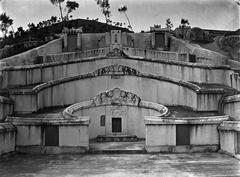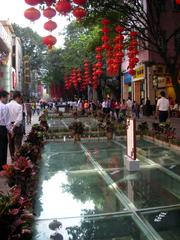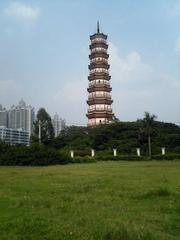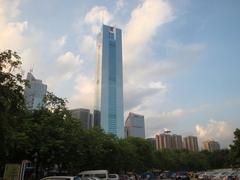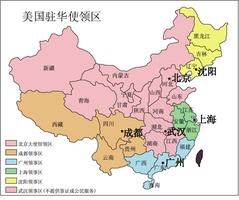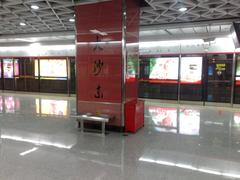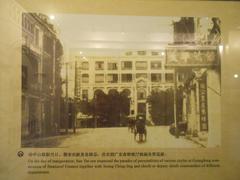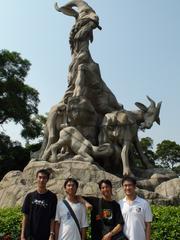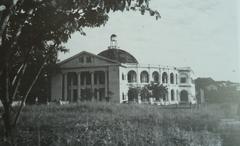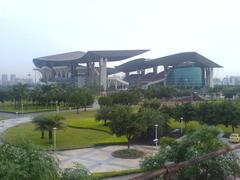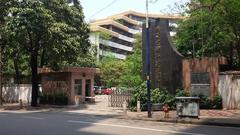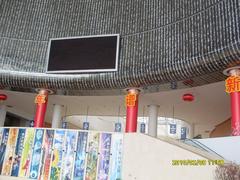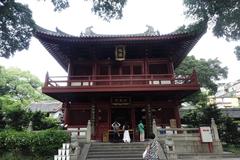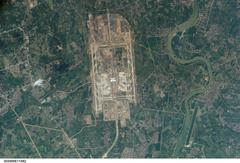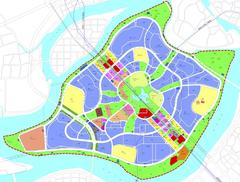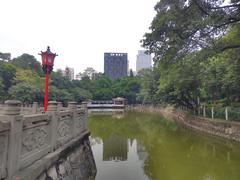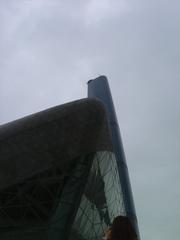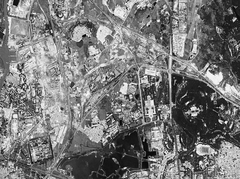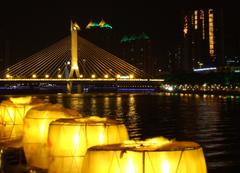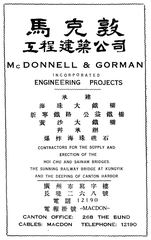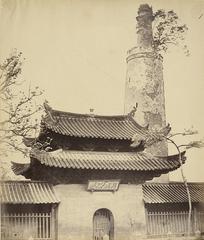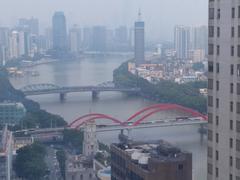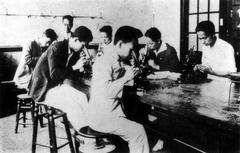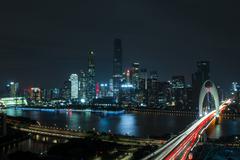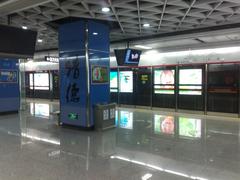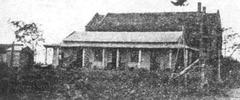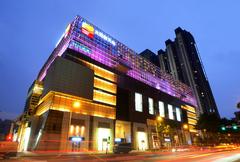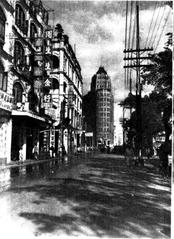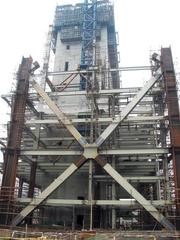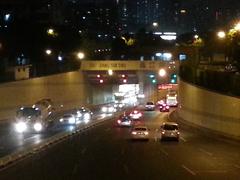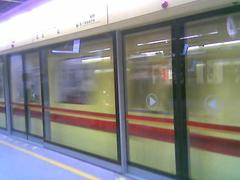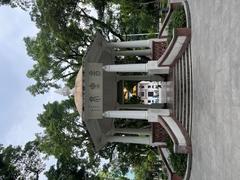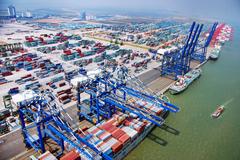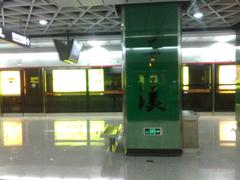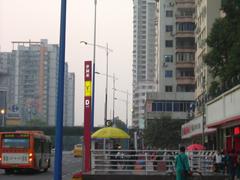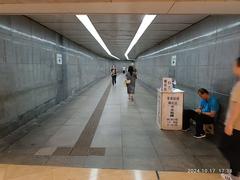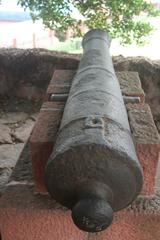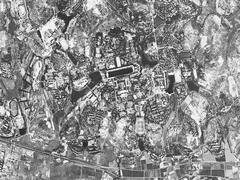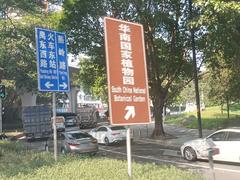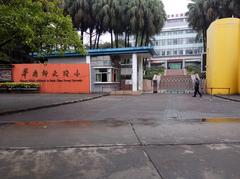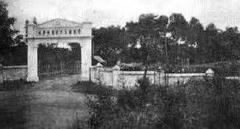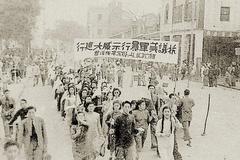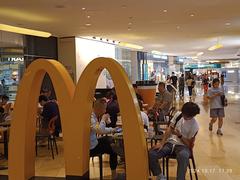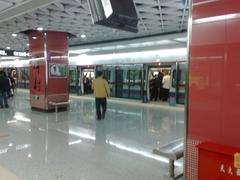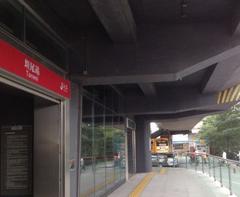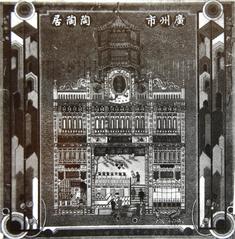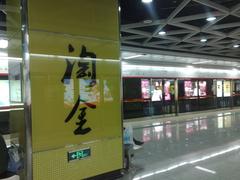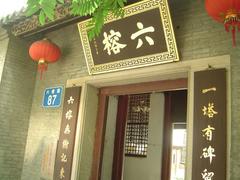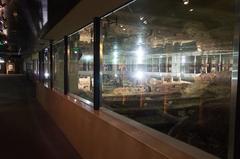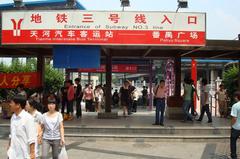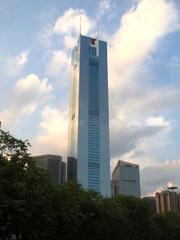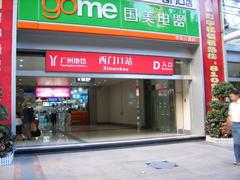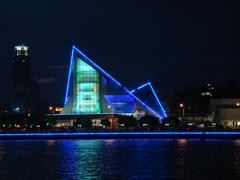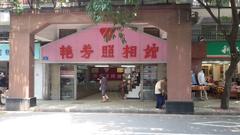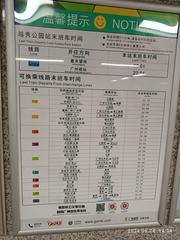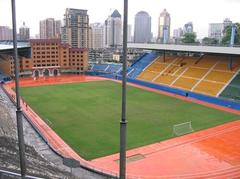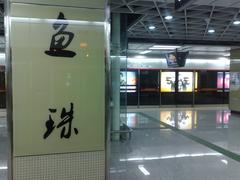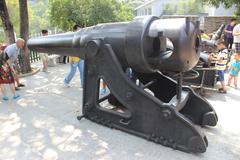Jinkeng Station: Visiting Hours, Tickets, and Guide to Guangzhou’s Historical Sites
Date: 15/06/2025
Introduction
Jinkeng Station (金坑站) is a pivotal transit hub in Guangzhou, situated on Line 21 of the city’s metro network. Since opening in December 2019, it has become a symbol of Guangzhou’s commitment to sustainable urban growth, blending cutting-edge transit technology with eco-friendly design. As a gateway to both modern amenities and historical attractions, Jinkeng Station serves locals and tourists seeking seamless urban mobility, scenic landscapes, and a window into Guangzhou’s rich heritage. This guide provides detailed information about visiting hours, ticketing, accessibility, nearby attractions, travel tips, and the station’s role in the city’s ongoing development (Guangzhou Metro Official Site).
Contents
- Visiting Hours and Ticket Information
- How to Get to Jinkeng Station
- Accessibility Features
- Nearby Attractions and Historical Sites
- Station Architecture and Green Innovations
- Operational Features and Urban Impact
- Travel Tips and Frequently Asked Questions (FAQs)
- Visitor Amenities and Practical Information
- Environmental Sustainability and Community Engagement
- Conclusion & Resources
Visiting Hours and Ticket Information
Operating Hours:
Jinkeng Station is open daily from approximately 6:00 AM to midnight, in line with Guangzhou Metro’s general schedule. Always check the latest train times via the official metro website or the Audiala app for updates.
Tickets:
- Single-ride tickets: Start at 2 RMB, with prices varying by travel distance.
- Rechargeable metro cards: Offer convenience and discounts for frequent travelers.
- Mobile payments: Alipay and WeChat Pay are accepted at all ticket kiosks and gates.
- Yang Cheng Tong card: Provides contactless entry across all metro lines (China Highlights Metro Guide).
Peak Hours:
Morning (7:30–9:30 AM) and evening (5:30–7:30 PM) are the busiest; plan accordingly for a more comfortable experience.
How to Get to Jinkeng Station
By Metro:
Jinkeng Station is on Line 21, linking central Guangzhou (Tianhe Park) with Zengcheng District in the east. The station is easily accessible from the city center, with express trains reducing travel time across the line.
From Major Hubs:
- Baiyun International Airport: Take Line 3 to Tianhe Coach Terminal, transfer to Line 21.
- Guangzhou East Railway Station: Use Line 1 to Tianhe Sports Center, transfer to Line 3, then to Line 21 at Tianhe Park.
- By Taxi/Ride-hailing: Services like Didi are available, with travel times from downtown varying by traffic (approx. 45–60 minutes) (Guangzhou Metro Map).
Accessibility Features
Jinkeng Station is fully accessible:
- Barrier-free exits, ramps, and elevators
- Tactile paving for visually impaired travelers
- Accessible restrooms
- Bilingual signage and announcements (Chinese/English)
- Staffed customer service desks
These features ensure that all visitors, including those with mobility challenges or strollers, can navigate the station independently (UN-Habitat, 2021).
Nearby Attractions and Historical Sites
Jinkeng Reservoir
Adjacent to the station, Jinkeng Reservoir is a tranquil green space ideal for photography, picnics, cycling, and nature walks. Its manicured lawns, reflective waters, and gentle hills create a picturesque setting that is especially popular in late spring and early summer (Trip.com, 2025).
Baiyun Mountain
A short journey by metro or taxi, Baiyun Mountain is famed for its panoramic city views and cultural significance, offering hiking trails and historical monuments.
Huangpu Ancient Port
Accessible via local transit, this historic site provides insights into Guangzhou’s maritime past and features well-preserved Lingnan architecture.
Zengcheng Lychee Orchards
A seasonal highlight, the lychee orchards near Jinkeng Station attract visitors each May–July for fruit picking and traditional food experiences.
Nanxiangshan Forest Park and Zengcheng Old Town
Nature lovers and history enthusiasts will enjoy the hiking trails of Nanxiangshan Forest Park and the traditional markets and temples in Zengcheng Old Town (Chinadiscovery.com).
Station Architecture and Green Innovations
Jinkeng Station features an elevated viaduct structure with two island platforms, supporting both local and express train services. The design incorporates:
- Rainwater harvesting systems
- Permeable pavements
- Photovoltaic solar panels
- Maximized natural lighting
In 2019, Jinkeng became the first mainland China metro station to achieve the “Three-star Green Building Design Mark Certificate,” setting a benchmark for sustainable infrastructure (Guangdong Province Department of Housing and Urban-Rural Development, 2019).
Operational Features and Urban Impact
Line 21’s Design:
Passing loops and express tracks at Jinkeng Station allow trains to reach up to 120 km/h, balancing rapid transit with local stops.
Socioeconomic Impact:
Since opening, the station has spurred residential and commercial development, increased property values, and enhanced connectivity between Guangzhou’s urban core and its emerging suburbs.
Integration with Future Metro Lines:
Jinkeng Station’s success has influenced subsequent metro projects, emphasizing the importance of green design and multi-modal integration (UN-Habitat, 2021).
Travel Tips and Frequently Asked Questions (FAQs)
Travel Tips
- Best Visiting Times: Weekdays and early mornings for a quieter experience
- Payment: Mobile payments are widely accepted; carry some cash for small vendors
- Weather: Summers are hot and humid—dress lightly and stay hydrated
- Safety: Follow security screening procedures and be mindful of personal belongings
FAQs
Q: What are the visiting hours of Jinkeng Station?
A: Generally 6:00 AM to midnight; confirm via the official website or app.
Q: How much do tickets cost?
A: Fares start at 2 RMB, depending on the travel distance.
Q: Is Jinkeng Station accessible for disabled visitors?
A: Yes, comprehensive accessibility features are provided.
Q: What attractions are nearby?
A: Jinkeng Reservoir, Baiyun Mountain, Huangpu Ancient Port, and Zengcheng Lychee Orchards.
Q: Where can I find more information or plan my route?
A: Use the official Guangzhou Metro website or the Audiala app.
Visitor Amenities and Practical Information
- Restrooms and Seating: Available within the paid area
- Bicycle Parking: Near station exits for easy last-mile travel
- Nearby Shops: Convenience stores and ATMs are available
- Free Wi-Fi: Most metro stations offer Wi-Fi; a Chinese phone number may be required for access
Environmental Sustainability and Community Engagement
Jinkeng Station’s green design is part of Guangzhou’s broader ecological belt. The surrounding blue-green infrastructure:
- Supports biodiversity with native plantings
- Contributes to flood mitigation and urban cooling
- Promotes green mobility via electric buses and cycling paths (Metropolis, 2019)
Community programs and educational signage encourage environmental stewardship among visitors.
Conclusion & Resources
Jinkeng Station exemplifies Guangzhou’s vision for sustainable, inclusive, and culturally connected urban transit. Its state-of-the-art facilities, accessibility, and proximity to natural and historical sites make it an ideal starting point for both daily commutes and leisurely exploration. For up-to-date schedules, travel tips, and event information, use the Audiala app and consult official metro resources.
Useful Resources
- Guangzhou Metro Official Site
- Jinkeng Reservoir Visitor Guide
- Guangzhou Metro Map and Guide
- TravelChinaGuide Metro Map
- Guangzhou Tourist Maps and Attractions
- Guangzhou Metro Guide for Tourists
- Regional Travel Connections
- UN-Habitat Guangzhou 2021 Report
- Metropolis Ecological Belt Case Study
Explore our related articles for more on Guangzhou’s green spaces, metro system, and sustainable urban development.
